
How much do you think about your feet when you are doing yoga? In this article, three yoga teachers share why the feet truly are the foundations of a strong yoga practice. Adam Hocke delves into the foot as a meditative anchor, Lizzie Reumont marvels at the intricate architecture of the foot and Catherine Annis suggests ways of allowing your feet to become as tactile as your hands.
Paying attention to the feet in yoga from Adam Hocke
I see you staring at your feet. But what do you see? Are you in awe of the wonder of their construction or entrenched in a critique of your pedicure? There are many practical reasons why you should pay attention to your feet when practising yoga. When the arches of the feet are able to do their job, there is a reaction throughout the entire body that ensures your core is integrated, breath is supported, and postural sustainability is more likely. All of which are crucial to the longevity of our practice. However, I find there are other more compelling possibilities of how foot awareness can enrich practice. The mere writing of the previous sentence has made me chuckle, because, of course, feet aren’t typically the subject of spiritual devotion. Yet, within a yoga practice they can be an easily accessible meditative anchor to draw you into the present moment.
Try being On Your Feet as a Meditative Anchor
In any yoga sequence, keep your awareness on the points of contact between your feet and the floor. Notice the shifting of weight from one foot to another. What happens when you press more into the heel, or big toe, or pinky toe? Where does the weight feel heavy? Where does the weight feel light? Can you feel individual toes, or is it just one big blob of foot? What does the floor feel like through your feet? Being so far away from the head, feet can seem well removed from our perception of the present moment. But haven’t you noticed that most of the time they are the only thing that can feel the actual reality of where we are?
>>Try this daily foot practice from Adam<<
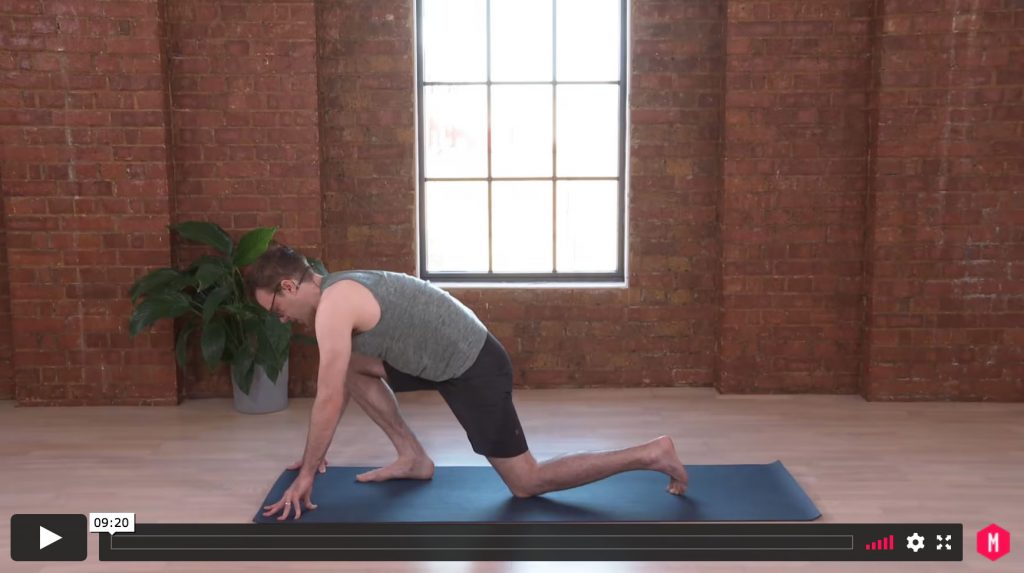
An interconnected marvel from Lizzie Reumont
The human foot is an intricate marvel. With 52 shared bones, it isn’t just the intricacy of the bones that make the foot so special, but rather, it’s the way the muscles, fascial structures and bones interconnect. These form a network of semi-fixed, adaptable springboards. Our feet both bear our weight and lift us up. A healthy foot that has connected with the earth and works with nature’s uneven terrain is ‘juicy’; there is an inherent flexibility in the structure that enables the body to both ground and lift, which helps us to adapt to a rapidly changing environment.
But what about those of us who have worn shoes for decades and sit at a desk all day? Could our feet also be juicy and adaptable? Shoes are akin to ‘casts’ since they don’t encourage the foot’s intrinsic capacity to stay awake. In other words, when you wear shoes and sit in a chair for the majority of the day, your feet tend to become dull, heavy and even painful from lack of movement.
Walk barefoot
When walking, the heel and outer foot help us to land; when we land, we orient and connect to the earth. The toe hing then enables us to take off and find direction, to walk with a healthy gait (stride). Some would even argue that when we lose the ability to hinge at the big toe and push off, the ageing process is expedited.
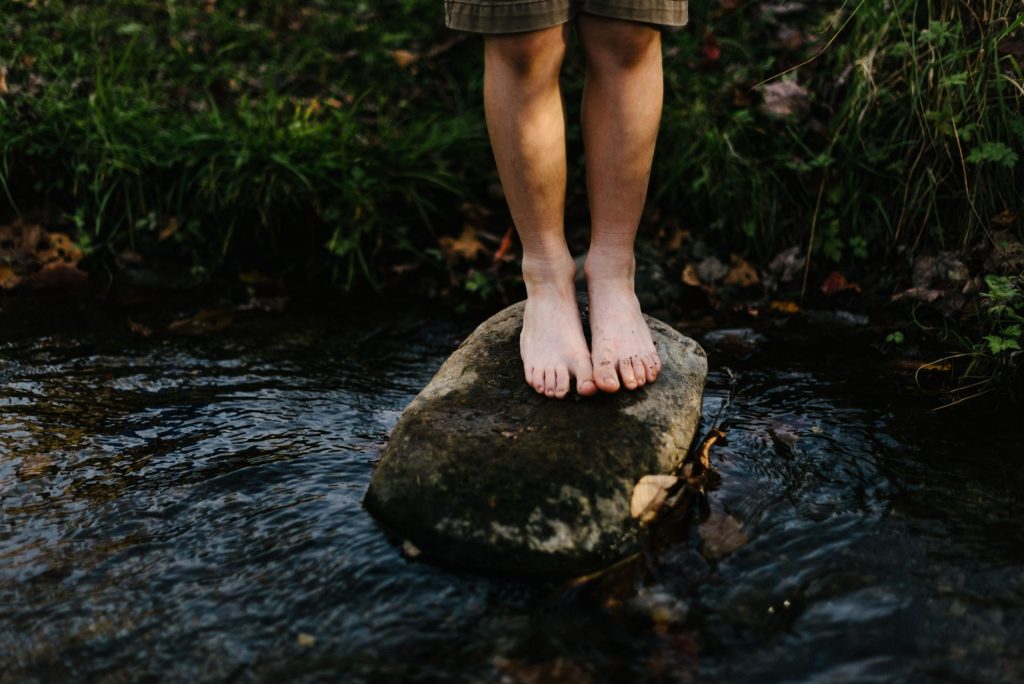
Explore being On Your Feet
Walk around your room without your toes on the ground. Notice what happens? The first thing you’ll do is look down. In addition to wanting to see if your toes are lifting up, most people whose toes are not connected with the ground look down, for without the sensory information we gain through the toes, our sense of security is cast aside. Some people may even lean back into the heels, which will add a challenge in moving forward. The next thing that will happen is that your stride will shorten.
Without the toe hinge, it is difficult to take wide and efficient steps, which means that there will be more effort and many more steps in getting from point A to point B. With a smaller gait comes less hip mobility, and with less hip mobility comes less spinal movement. The front of the spine will begin to flex in due to the weight of the head, and the weight being pulled into the back, eventually leading to the spine rounding…and voilà, gravity has won and walking now has become the elderly gesture of scuttling forward.
Have I scared you? Good! The best way to wake up your toes is to use them. It’s the perfect time of year to go barefoot as often as possible, and take time to rise up onto your toes a few times a day, lifting the heels off the ground for 30 seconds to a minute while finding your balance. Get up, and out on your feet (preferably in the grass)
>> Keep Your Feet Happy in this class with Lizzie<<
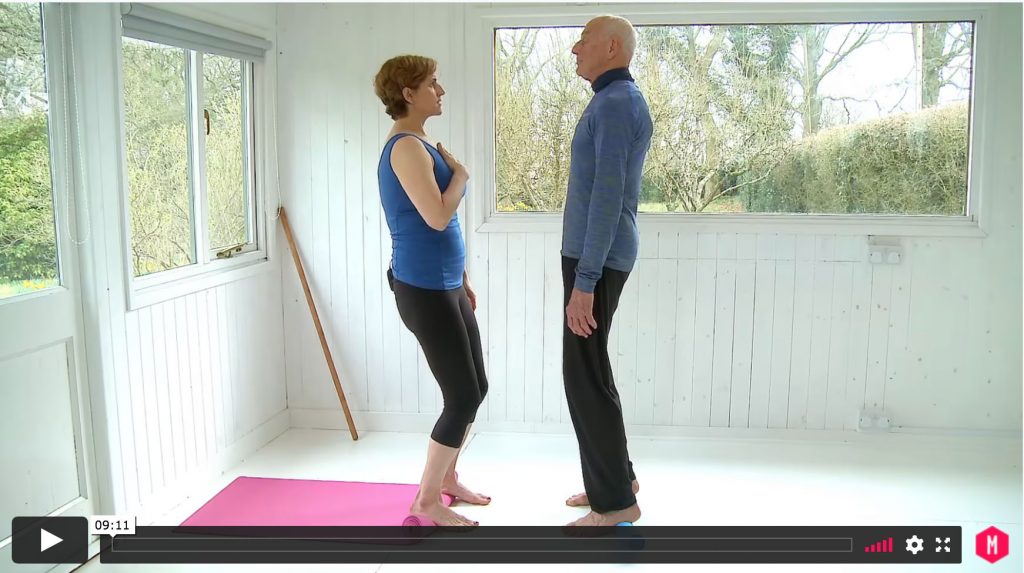
Our elastic, spring loaded shock-absorbing feet from Catherine Annis
Lots of people don’t like their feet, and may avoid touching or even looking at them. Are you one of them? If so, maybe it’s time to shift your perspective. As Lizzie explains above, your feet are a marvel of engineering. They are also your main (often only!) contact and connection with the earth. Not only do they anchor us in space, they give us all kinds of helpful information about the ground we are standing on. Astonishingly, there are as many nerve endings in the soles of your feet as in your hands. If we pay attention, they can tell us much about the surfaces we walk across – not only whether the ground is level and easy to walk upon, but also temperature and subtle differences in texture.
Try this: slide the sole of your naked foot slowly across the surface of the floor …. If it’s a hard floor, your foot will let you know whether you need to sweep and if it’s carpet, you can probably even tell whether it’s natural fibre or synthetic!
Fall in love with your feet
Opening up the feet has transformed my yoga practice. My feet have become more open and responsive, they feel more elastic and stronger now than when I was dancing. After years of relating to them as a simple mechanism for getting me from A to B, I’ve fallen in love with my feet. There is a real sense of satisfaction in working them, using them like cats’ paws against the floor, separating the toes, lifting the toes, stretching the arches and exploring their muscularity. Working with them intelligently has the power to transform even a simple walk down the street into an exercise in awareness.
If you wear a light soled shoe which protects you from harsh surfaces without trapping or restricting your foot, you can really feel how your foot adapts and rolls across the surface beneath you – whatever it is. Pavements are hard and unforgiving, but even they have texture – see if you can feel it from within your shoe. If not, consider what is happening inside that shoe. Is it confining you? If your foot is held too tightly, it will not respond by providing you the elastic spring and reactivity it is designed to provide. If the foot is trapped and restricted, then this will have an impact all the way up the chain.
Imagine what might be happening to your ankles, knees, hips, spine and even shoulders and neck if the shock absorber of your body has become rigid and unresponsive, slapping the ground rather than transforming and moulding itself to the surfaces it meets.
Treat Your Feet
We rely so much on our feet and yet we often neglect them. Have you considered giving your feet a treat? Bathe them in a bowl of warm water and then massage with a scrub combining sea salt and sesame oil. This mixture is commonly used by massage therapists to shift stagnant energy and is wonderfully soothing. Rinse, and then wrap your feet in warm towels. For some massage ideas, check out my class on MFML, and then see whether you can begin to explore the effect of your amazing open feet on your legs – particularly in the standing and balancing postures. Go play and enjoy!
>>Inspired? Wake up your feet with this class from Catherine<<
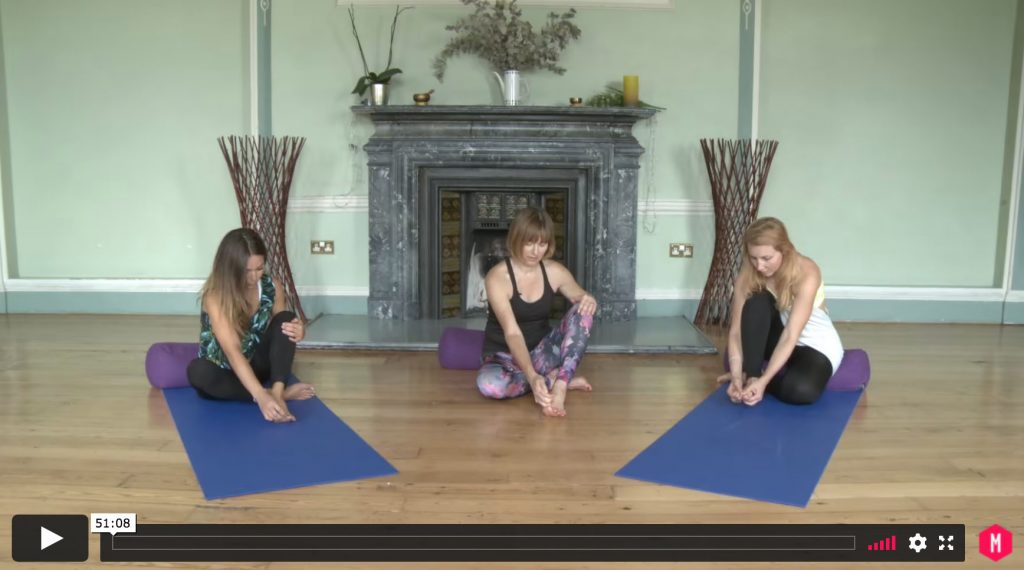
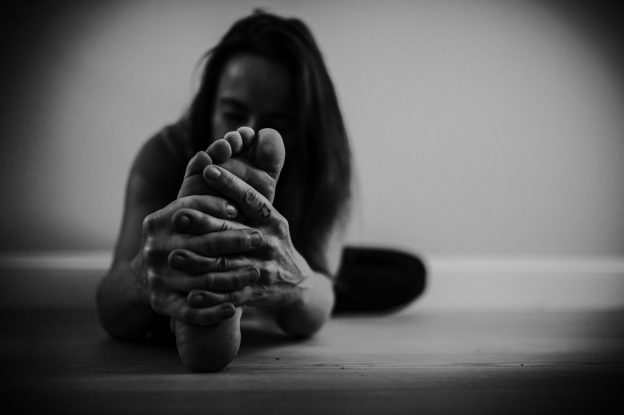




Leave a Reply